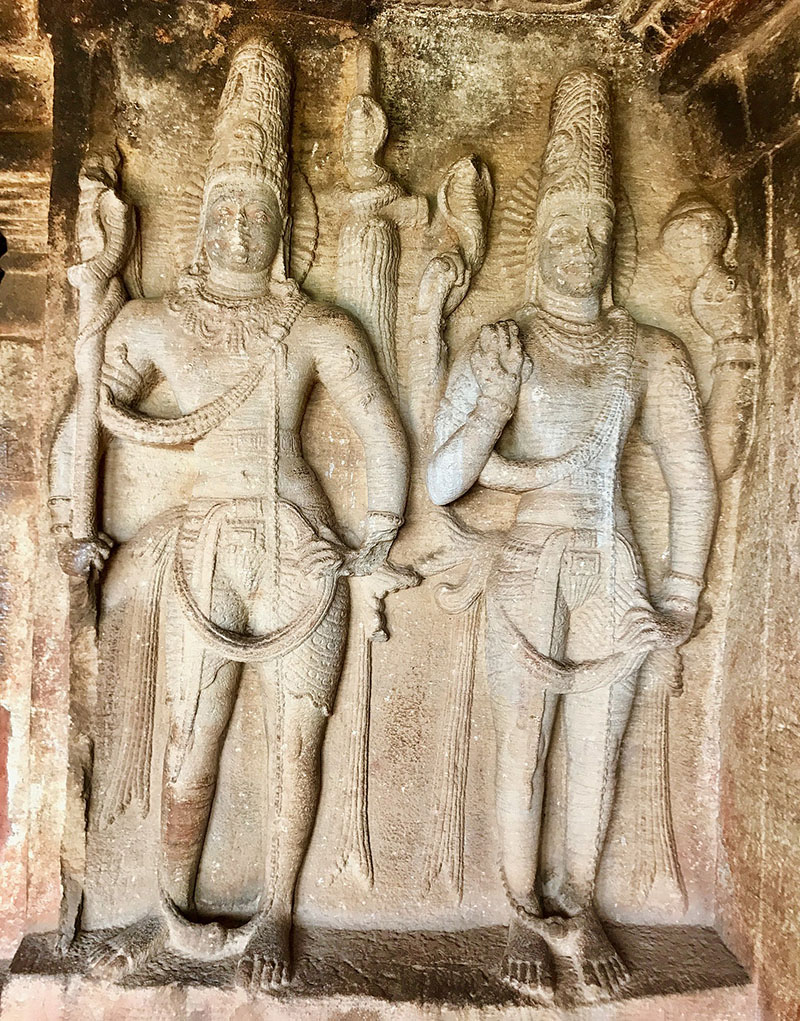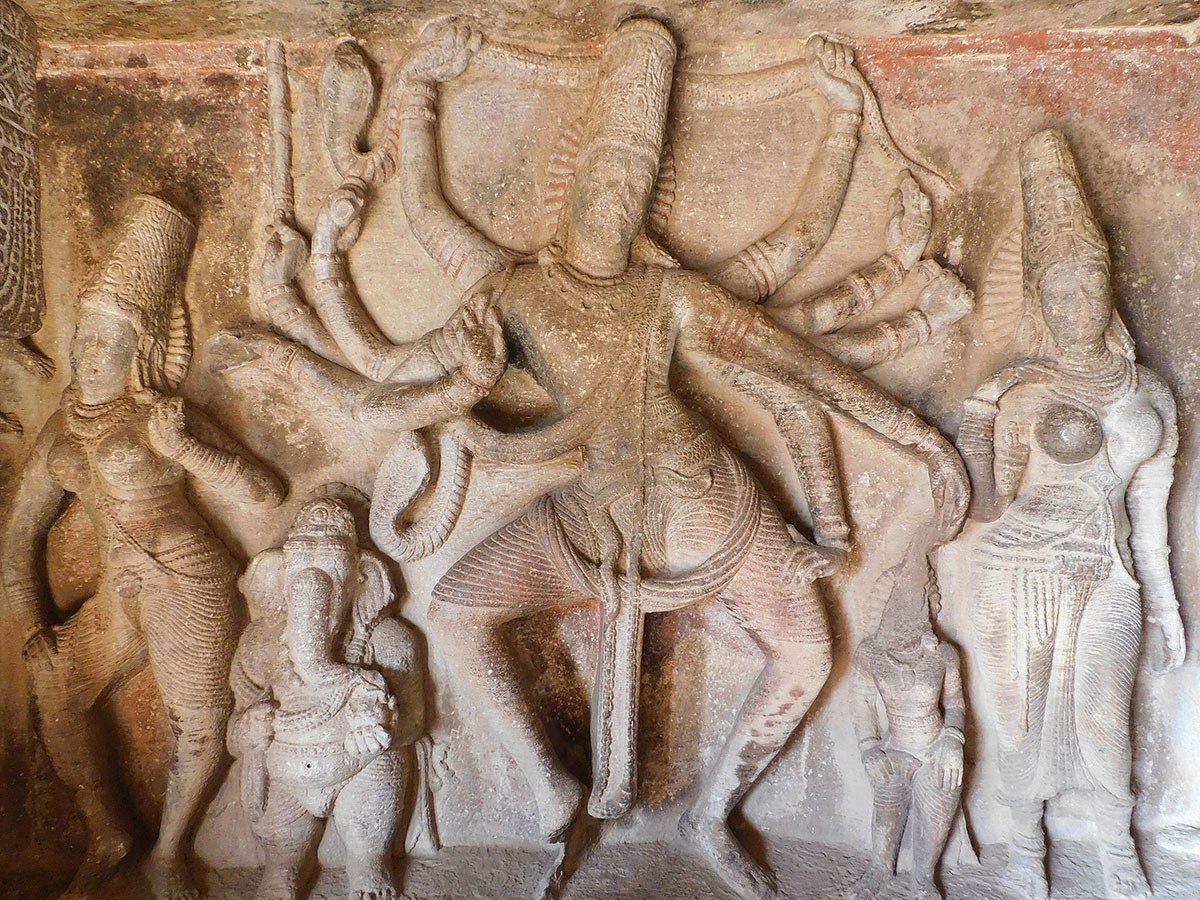ARTICLE
Ravanaphadi Cave, Aihole
The Ravanaphadi cave is unprecedented in terms of both style and subject. The complexity of its iconographic programme may be seen as a precedent to later Deccan cave-temples as well as freestanding shrines. Scholars have suggested that one of the objectives of the cave was to incorporate the pre-existing iconography of the Saptamatrikas into a Chalukya royal shrine, as it is around this time that Chalukya inscriptions begin to claim that the dynasty was favoured by these goddesses. The scene of Shiva dancing may thus be understood as following his defeat of the demon Andhakasura, an endeavour for which the Saptamatrikas were created to assist him.
The panel assumes further political significance in the light of the Chalukyas’ defeat of their rivals, the Kadambas. The Kadambas prominently featured the Saptamatrikas in their shrines and inscriptions. Their depiction in this cave may thus be read as a sign of Chalukya dominance and the appropriation of the icons of their defeated enemies, especially since earlier Chalukya temples such as Cave 1 at Badami give prominence to Kartikeya.
Bibliography
Our website is currently undergoing maintenance and re-design, due to which we have had to take down some of our bibliographies. While these will be re-published shortly, you can request references for specific articles by writing to hellomapacademy@map-india.org.








